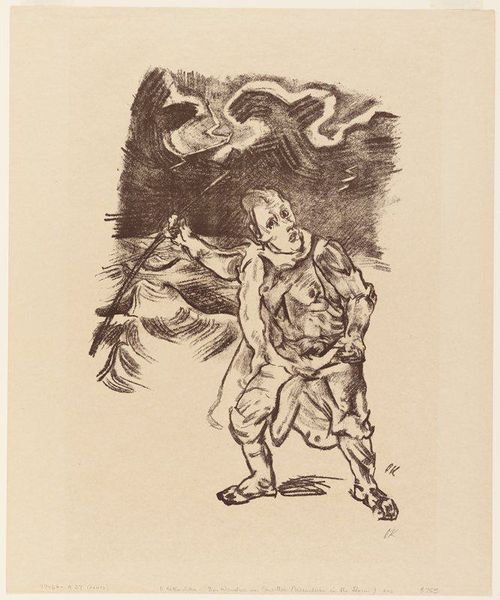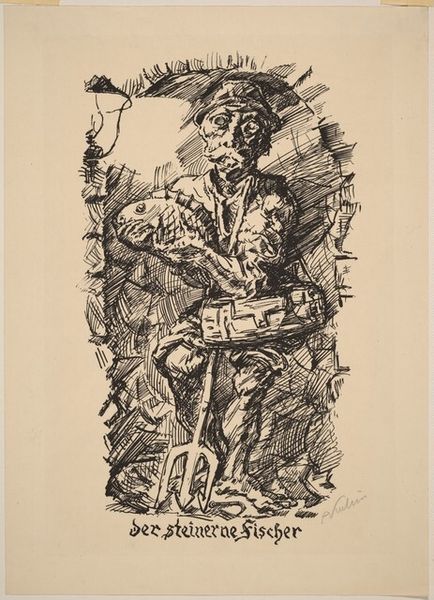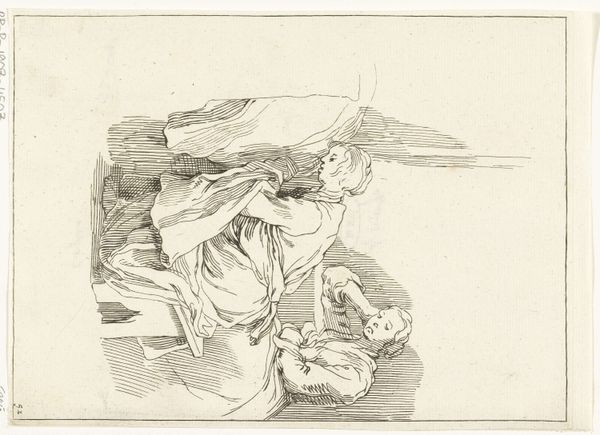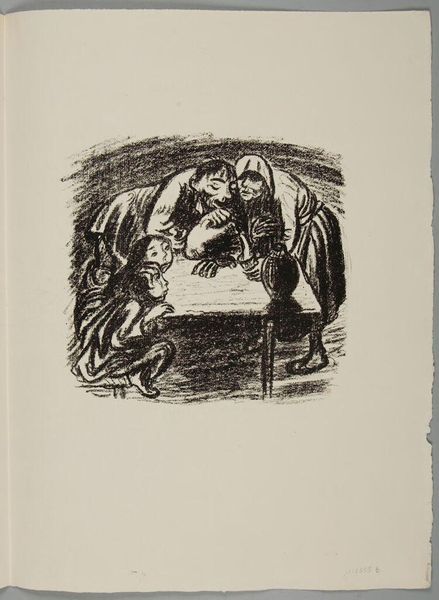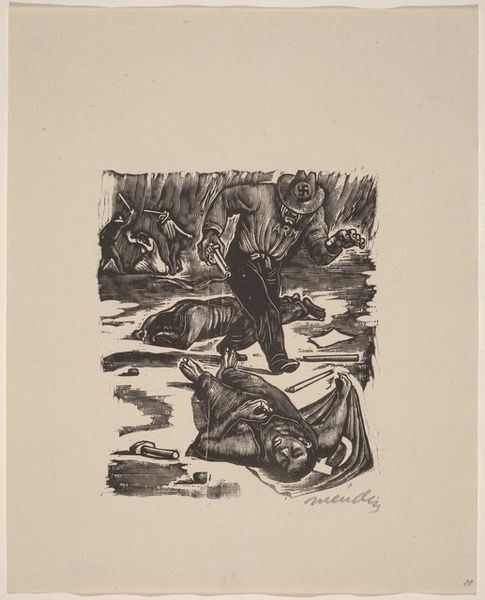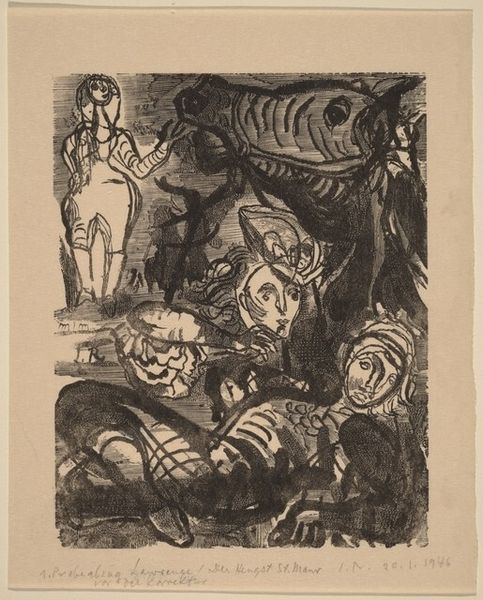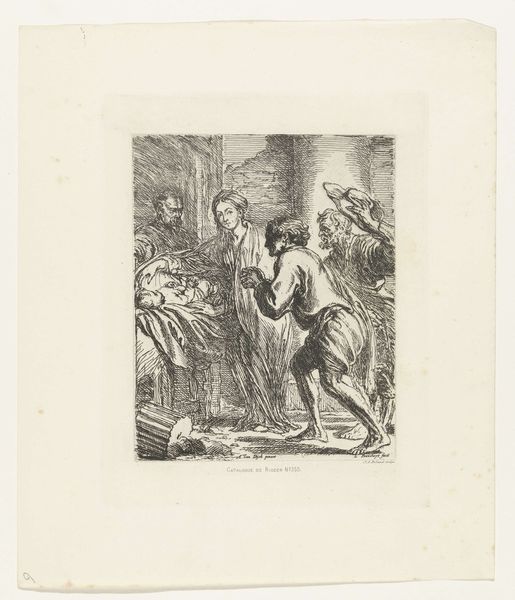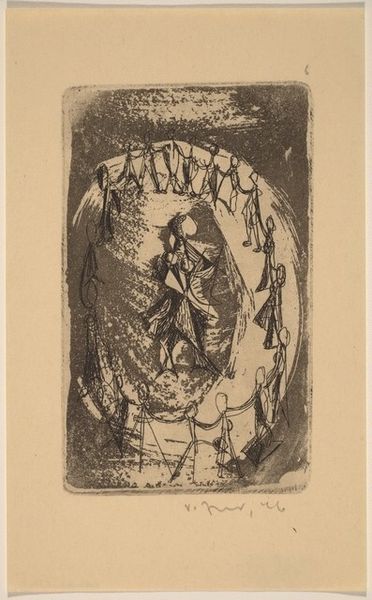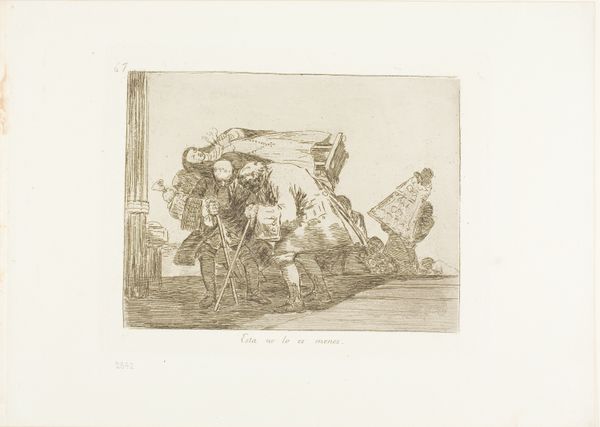
drawing, lithograph, print
#
portrait
#
drawing
#
ink drawing
#
lithograph
# print
#
figuration
#
pencil drawing
#
expressionism
#
history-painting
#
modernism
Dimensions: 22 x 18 1/4 in. (55.88 x 46.36 cm) (plate)22 x 18 1/4 in. (55.88 x 46.36 cm) (sheet)
Copyright: No Copyright - United States
Curator: Oh, the drama! The tension is palpable, isn’t it? Editor: It's raw, certainly. Look at the frantic hatching of lines – this print, a lithograph by Oskar Kokoschka, immediately unsettles. "Pietà", made in 1914, presents a somber scene, mirroring the Virgin Mary cradling the body of Christ, yet charged with an…urgent emotion. Curator: Yes, a rawness! The distorted figures, especially the person holding the other – the intensity in their eyes and posture makes my heart ache. There is an angst, not unlike some sort of dark premonition... Kokoschka was right on the edge of something awful. It feels profoundly personal. Do you think it mirrors his anxieties from the lead up to the first world war? Editor: That would definitely fall within Kokoschka's typical production scope during that period. The quickness of line here is deceptive – lithography is hardly instantaneous. But its reproducibility meant such expressions, rooted in emotion, could disseminate quickly. It bypasses the art world entirely and lands straight onto streets, and printed as book illustrations like this one, into peoples homes. A commentary in itself on the way such suffering and distress was impacting civilian life in the 1910s Curator: And doesn't that amplify the emotion? I mean, to see this replicated across the city, across the country...it turns personal suffering into something communal. Grief then becomes a shared burden. Isn't it kind of extraordinary, too, that even though this work relies on Christian symbolism, the emotional impact has remained completely relevant? No particular faith is needed to interpret the power in such vulnerable intimacy and deep grief Editor: Absolutely. Although the 'subject' may present a Christian iconography in name, Kokoschka has brought this history-painting into a totally contemporary setting through the means of his distinct expressionist style, and accessibly printed material. It moves beyond its original confines and religious implications. I think about the role of printmaking for social change; It would have brought art, and commentary to working class and middle class people who wouldn't be in the usual galleries or able to afford paintings at all. Curator: So true! So, we’re looking at a potent expression, cleverly wrought by the artist at this moment in history with great impact. Thanks to industrial technology, and ingenuity, the work can take on the important role of the dissemination of otherwise very personal, very human expressions, right? Editor: Yes, from his anxieties onto the streets and into the minds of a new audience who understood intimately his sentiments. And now into our ears... it brings the subject and context to light in an important way.
Comments
No comments
Be the first to comment and join the conversation on the ultimate creative platform.

